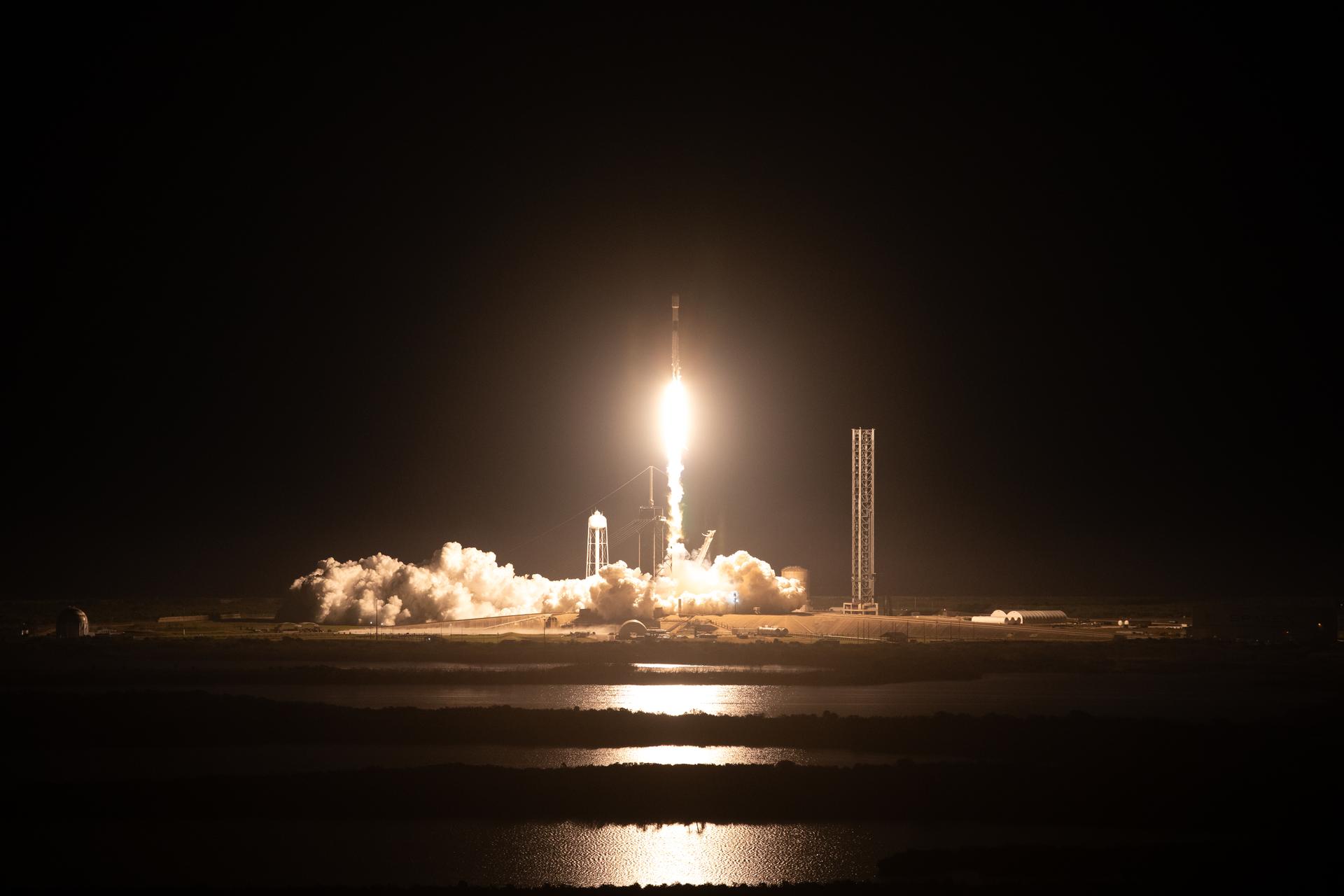|
Feb. 15, 2024 RELEASE:
24-031 NASA
Artemis Science, First Intuitive Machines Flight Head to Moon
A SpaceX Falcon 9 rocket carrying Intuitive Machines’ Nova-C lunar lander lifts off from Launch Pad
39A at NASA’s Kennedy Space Center in Florida at 1:05 a.m. EST on Feb. 15, 2024. As part of NASA’s CLPS (Commercial Lunar Payload Services) initiative and Artemis campaign, Intuitive Machines’ first lunar mission will carry NASA science and commercial payloads
to the Moon to study plume-surface interactions, space weather/lunar surface interactions, radio astronomy, precision landing technologies, and a communication and navigation node for future autonomous navigation technologies. A suite of NASA science instruments and technology demonstrations is on the way to our nearest celestial neighbor for the benefit of humanity.
Through this flight to the Moon, they will provide insights into the lunar surface environment and test technologies for future landers and Artemis astronauts.
At 1:05 a.m. EST on Thursday, Intuitive Machines’ Nova-C lander launched on a SpaceX Falcon 9 rocket from Launch Complex 39A at the agency’s
Kennedy Space Center in Florida. At approximately 1:53 a.m., the lander deployed from the Falcon 9 second stage. Teams confirmed it made communications contact with the company’s mission operations center in Houston. The spacecraft is stable and receiving
solar power. These deliveries are part of NASA’s CLPS (Commercial Lunar Payload Services) initiative and Artemis campaign, which includes new
solar system science to better understand planetary processes and evolution, search for evidence of water and other resources, and support long-term human exploration. "NASA scientific instruments are on their way to the Moon – a giant leap for humanity as we prepare
to return to the lunar surface for the first time in more than half a century,” said NASA Administrator Bill Nelson. “These daring Moon deliveries will not only conduct new science at the Moon, but they are supporting a growing commercial space economy while
showing the strength of American technology and innovation. We have so much to learn through CLPS flights that will help us shape the future of human exploration for the Artemis Generation.”
While enroute to the Moon, NASA instruments will measure the quantity of cryogenic engine fuel as it
is used, and during descent toward the lunar surface, they will collect data on plume-surface interactions and test precision landing technologies.
Once on the Moon, NASA instruments will focus on investigating space weather/lunar surface interactions
and radio astronomy. The Nova-C lander also will carry retroreflectors contributing to a network of location markers on the Moon for communication and navigation for future autonomous navigation technologies. NASA science aboard the lander includes:
Intuitive Machines’ Nova-C-class lunar lander, named Odysseus, is scheduled to land on the Moon’s South Pole region near
the lunar feature known as Malapert A on Thursday, Feb. 22. This relatively flat and safe region is within the otherwise heavily cratered southern highlands on the side of the Moon visible from Earth. Landing near Malapert A will also help mission planners
understand how to communicate and send data back to Earth from a location where Earth is low on the lunar horizon.
The NASA science aboard
will spend approximately seven days gathering valuable scientific data about Earth’s nearest neighbor, helping pave the way for the first woman and first person of color to explore the Moon under Artemis. Learn more about NASA’s CLPS initiative at:
-end-
TO RECEIVE NASA NEWS RELEASES
NASA news releases and other information are available automatically by sending an e-mail to hqnews-join@newsletters.nasa.gov (no
subject or text in the body is required).
To unsubscribe from the list, send an e-mail message to hqnews-leave@newsletters.nasa.gov (no subject
or text in the body is required).
|

